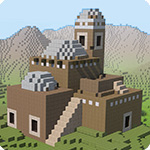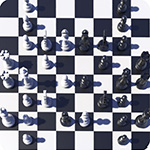An in-depth tutorial on the principles of writing L-Systems in Houdini using examples from Aristid Lindenmayer’s book ‘The Algorithmic Beauty of Plants’ (1:39:07 minutes)
Category Archives: Tutorials
UV Tools
This Tutorial is an Overview of all the different nodes available to create UVs in Houdini, and also covers setup, display and previewing of UVs and textures in Houdini, and demonstrates a quick way to display PBR textures. (57:21)
Copy Stamping and the Foreach Loop
This tutorial describes how to use point attributes to influence upstream input nodes, first using the traditional Copy Stamp Node then again using the Foreach Loop nodes as recommended by sidefx. Then it takes an in depth look at the other uses of a Foreach loop: Looping by pieces, by number, and fractals. (77:38)
Lines and Curves
Back to basics, with an explanation of how curves are used in Houdini, covering the Line, Curve, Ends, Curvedraw and add nodes. The these are shown in action when we create a procedural racing track generator (64:25)
Introducing Volumes and VDBs
An introduction to the different types of volumes Houdini can create, and some examples of their
use in procedural geometry creation. (61:27 minutes)
Attribute Transfer Node
This tutorial looks at the Attribute Transfer Node which passes information from one object to another based on their position in space. It uses a network that places tree roots on a hillside to demonstrate various ways in which attribute transfer can be used to create realistic procedural scenes. (54:00)
All About Houdini Digital Assets
Houdini Digital Assets (HDAs) are networks of nodes that can be packaged up to simplify commonly used tasks in Houdini or to create tools that can be used in external software.
This tutorial shows you how to set them up for different uses and to create correctly formatted geometry. (51:55)
Group Nodes
This tutorial looks at how to create and use groups in Houdini. It covers the group node, the group range node, the group transfer node and the group combine node. These are demonstrated by the creation of a chessboard which is controlled by chess notation. (30:19)
Scatter Node
A look at the Scatter Node which is used to place random points on a surface. It covers different ways of driving point placement (point counts, textures, density attribute) and dives deeper into working with attribute VOPs. It demonstrates how this node can be used to create a realistic distribution of vegetation. (35:58)
Merge Node
A short tutorial on how and when to use the merge node, and how you can use groups to access individual sources after they have been merged. (10:04)










